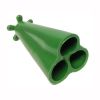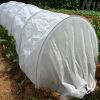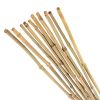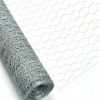How to Control Against Caterpillars
After slugs, caterpillars are the next most harmful pest in vegetable patches for Irish gardeners. These fury little fellows munch their way through the foliage of a range of brassica plants and turnips causing extreme damage.
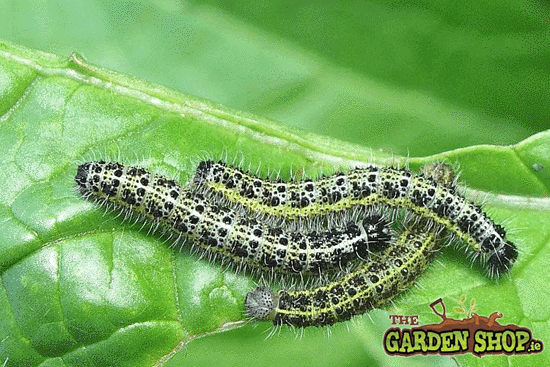
In many cases an infestation of caterpillars can lead to entire rows of crops being sent to the compost bin. Probably the worst feature of a caterpillar attack is that they don’t just eat the outer and older foliage, but they tend to burrow their way right into the centre of crops destroying an entire plant within one morning's feed.
Caterpillars are the larvae stage of the adult butterfly. There are many different types of butterfly and the one that attacks brassica plants is called the white butterfly or cabbage whites. These particular butterflies find brassica to be the perfect host for their eggs and their larvae. The butterflies are most active in the growing season from late May to July and again in late August to September. This is the time when crops should be protected.
How to Recognise Caterpillar Damage
Host plants include cabbage, broccoli, cauliflower, lettuce, tomatoes, turnips, swede and sprouts. The damage is most recognisable when the entire of a leaf is eaten but the mid-rib and lateral veins are still intact, giving a skeletal look to the plant.
Another obvious way to spot caterpillar infestations is to view the pests on the plants. They are active during the day and can easily be spotted feeding on the foliage.
Their eggs can be found on the underside of leaves. So it is important to look out for this to prevent infestations developing on crops. The eggs can be white or yellow in colour and are generally clustered in bunches.
How to Control Caterpillars
Organic Options & Barriers
- Flour: When leaves are wet, powder with baking flour. The caterpillars will become covered in a white ‘glue’ causing them to fall off
- Sour Milk: If you spot eggs on the underside of the foliage, paint or drench in sour milk as this will kill the eggs
- Garden Netting: This will act as a barrier to the butterfly, preventing it from laying eggs on your crops. The netting needs to remain over your crops from mid May to Late September to avoid egg laying. The netting also needs to be kept up off the plant’s foliage to prevent egg laying
- Attracting birds and other mammals such as hedgehogs to your garden will also help to keep numbers down
Chemical Control Options
- There are a number of chemical control options that can prevent and reduce the number of caterpillars on plants
- Cytrin garden pest killer, contains cypermethrin will control caterpillars
- The chrysanthemum extract pyrethrum will also control this pest
Companion Plants
- Hyssop, Sage, Thyme and Mint all act to repel the butterfly and can be planted near cabbages to deter egg laying

